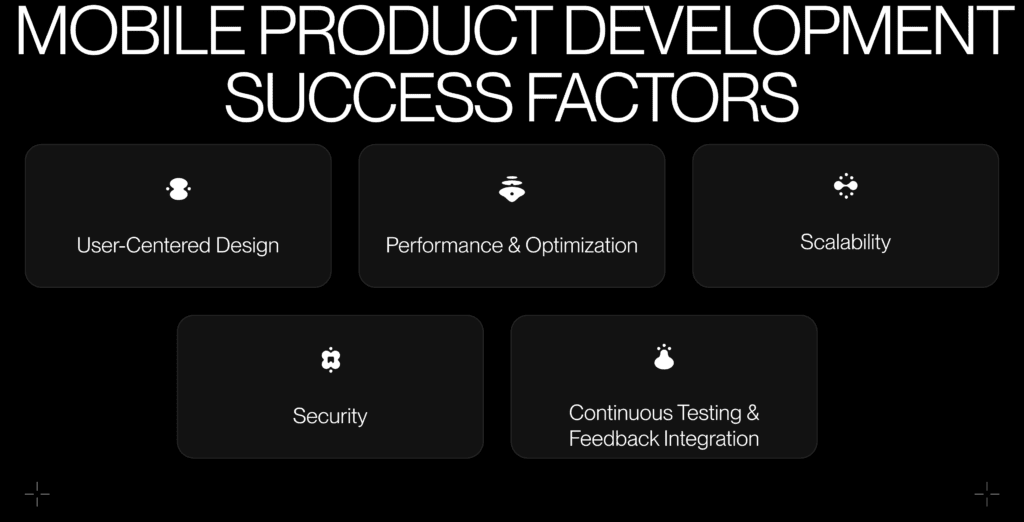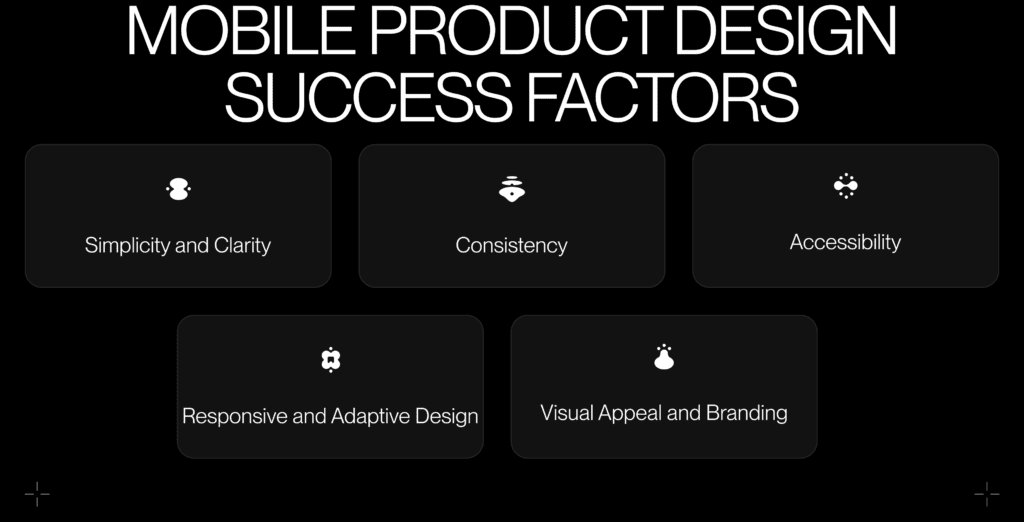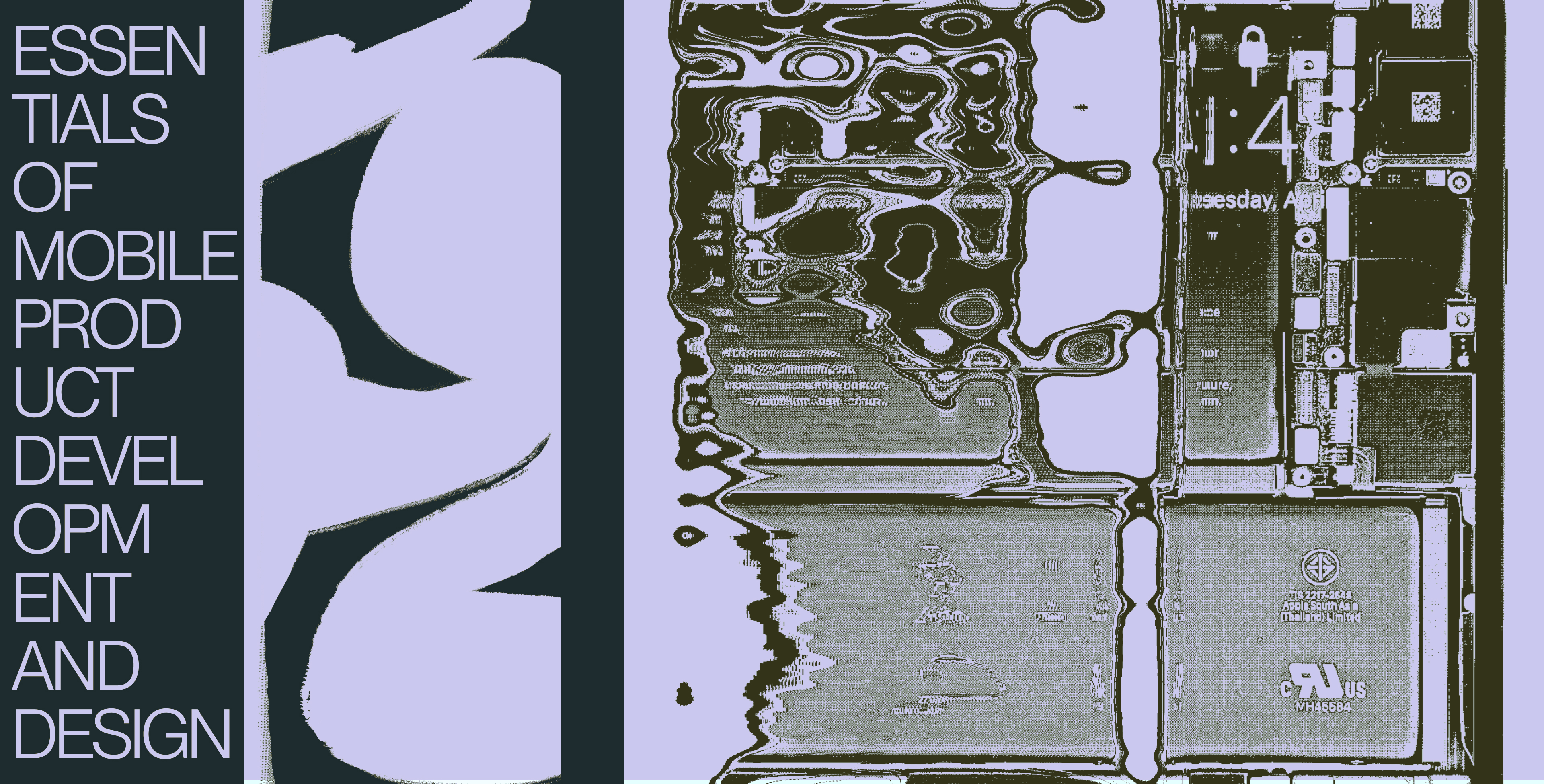Outline:
In 2007, a sleek, revolutionary device was introduced to the world—the iPhone. What many didn’t realize at the time was that this little gadget would become the cornerstone of a global transformation, reshaping industries, economies, and the way we live our daily lives.
But behind every successful mobile app and product that now populates our phones, there’s a fascinating blend of creativity, strategy, and relentless problem-solving. It’s a journey that starts with an idea and evolves through careful planning, development, and design, all the way to becoming an essential part of someone’s life.
What makes one mobile product soar while others barely lift off the ground? The answer lies in understanding the essentials of mobile app development and design—an art and science where success hinges on more than just technical prowess. It’s about building something that not only works but resonates deeply with users.
We’re going to explore the key factors that drive successful mobile product development and design, offering insights into the critical elements that can turn a simple idea into a must-have mobile experience.
Mobile App Development: Balancing User Needs and Technical Requirements
In the competitive landscape of mobile app development, success hinges on more than just technical prowess. It demands a strategic approach that prioritizes user experience, aligns with market trends, and leverages cutting-edge technologies. To create a truly exceptional mobile app, consider the following:
01 Understanding the Target Audience
The foundation of any successful mobile product is a deep understanding of its intended users. Imagine crafting a beautiful, feature-rich app, only to find out that it doesn’t meet the needs or preferences of your target audience. That’s a misstep no one wants to take. Developing a mobile product without a clear grasp of who will use it is like setting out on a journey without a map.
Start by creating detailed user personas that represent the different segments of your target audience. These personas should go beyond basic demographics and delve into the behaviors, needs, and pain points of potential users. What problems are they trying to solve? How do they interact with their devices? What are their preferences for design and functionality? Answering these questions helps ensure that every decision made during development is user-centric, aligning the product’s features with real-world needs and desires.
02 Defining Clear Objectives and Goals
In the world of mobile product development, clarity is key. Before a single line of code is written, it’s essential to establish clear objectives and goals. These goals should be more than vague aspirations; they need to be specific, measurable, and aligned with the overall vision of the product.
For example, if you’re developing a fitness app, your goals might include increasing user engagement through daily workout reminders, achieving a certain number of downloads within the first six months, or maintaining a high user retention rate. Clear goals guide the development process, helping the team stay focused and make informed decisions. They also provide a benchmark for success, allowing you to measure progress and make adjustments as needed.
03 Technology Stack and Platform Selection
Choosing the right technology stack and platform is like selecting the right tools for a job—essential for ensuring the product is built efficiently and effectively. The decision between developing a native app (for iOS or Android), a hybrid app, or a web app depends on several factors, including the target audience, budget, and desired features.
Native apps, which are developed specifically for a single platform, typically offer the best performance and access to device-specific features but come with higher development costs. Hybrid apps, built using a single codebase that works across multiple platforms, offer a good balance of cost and functionality but may compromise slightly on performance. Web apps, which run in a mobile browser, are the most cost-effective and easiest to update but are limited in terms of access to native device features.
Making the right choice here sets the stage for the entire development process, influencing everything from user experience to long-term maintenance and scalability.
Also See: Mobile APP Development Technologies: А 2025 Forecast
Mobile Product Development Success Factors
User-Centered Design
Creating a mobile product that resonates with users starts with user-centered design. This approach puts the user at the heart of the development process, ensuring that the product is not just functional but also intuitive and enjoyable to use.
This involves gathering feedback from potential users early and often, making adjustments based on their input, and continually testing the product to ensure it meets their needs.
Performance and Optimization
In a world where users expect instant results, performance is crucial. Slow load times, laggy interactions, or excessive battery consumption can quickly drive users away. Optimizing code, compressing assets, and streamlining backend processes are all essential to keeping the app running smoothly.
The goal is to create a seamless experience where the technology disappears, allowing users to focus on what they want to do.
Scalability
Today’s success shouldn’t be tomorrow’s limitation. Scalability ensures that your mobile product can grow with your user base, handling increased traffic and data without compromising performance. This requires thoughtful planning and architecture from the outset, with an eye toward future expansion.
Whether it’s scaling your backend servers, databases, or even the user interface, being prepared for growth is key to long-term success.
Security
With the increasing prevalence of cyber threats, security is no longer an afterthought—it’s a fundamental requirement. Users entrust mobile apps with sensitive personal data, and any breach can be catastrophic, not just for the users but for the brand as well.
Implementing robust security measures, such as encryption, secure authentication, and regular security audits, helps protect user data and builds trust in your product.
Continuous Testing and Feedback Integration
In mobile development, testing is not a one-time event—it’s an ongoing process. Continuous testing ensures that every new feature or update works seamlessly with the rest of the product. Automated testing tools can help streamline this process, allowing for more frequent updates and quicker identification of issues.
Equally important is integrating user feedback, which provides invaluable insights into how the product is performing in the real world and where improvements can be made.

Designing for Mobile: Key Considerations and Success Factors
In the competitive world of mobile apps, exceptional design is essential to captivate users and drive success. By focusing on simplicity, consistency, accessibility, responsive design, and visual appeal, you can create a product that stands out from the crowd and delivers a truly memorable experience.
01 Simplicity and Clarity
In the bustling world of mobile apps, simplicity is your best friend. Users expect to accomplish tasks quickly and with minimal effort. A cluttered interface with too many features can overwhelm and confuse, leading to frustration and eventual abandonment. The key is to distill your product down to its core functions—what does it absolutely need to do to solve the user’s problem?
Design should focus on clear, straightforward navigation and intuitive user interfaces. Every element should have a purpose, and every interaction should be easy to understand without requiring a tutorial. A well-designed app guides the user naturally through the process, with as few steps as possible, making the experience seamless and enjoyable. Remember, the goal is not to impress users with complexity but to delight them with ease.
02 Consistency
Consistency in design is about creating a cohesive experience across the entire app. When users navigate your product, they should encounter familiar patterns, visuals, and interactions. This not only makes the app easier to use but also builds trust and reliability. Consistency applies to everything—from the placement of buttons to the color scheme, typography, and even the tone of the content.
One effective way to ensure consistency is by adhering to platform-specific guidelines. For instance, Android’s Material Design and iOS’s Human Interface Guidelines provide detailed instructions on how to create a consistent user experience on their respective platforms. Sticking to these guidelines helps ensure that your app feels native to the device, which can improve user satisfaction and retention.
03 Accessibility
Accessibility isn’t just a nice-to-have feature—it’s a necessity. A well-designed mobile product should be usable by as many people as possible, including those with disabilities. This means considering aspects like color contrast for users with visual impairments, providing text alternatives for images, and ensuring that the app is navigable using assistive technologies like screen readers.
Designing with accessibility in mind not only broadens your audience but also demonstrates a commitment to inclusivity and social responsibility. Following accessibility standards, such as the Web Content Accessibility Guidelines, ensures that your product meets the needs of diverse users and complies with legal requirements in many regions.
04 Responsive and Adaptive Design
With users accessing mobile products on a wide variety of devices—ranging from small smartphones to large tablets—responsive and adaptive design becomes critical. Responsive design ensures that your app’s interface adjusts smoothly to different screen sizes and orientations, providing a consistent experience no matter the device. This involves using flexible layouts, scalable images, and media queries to create an adaptable design.
On the other hand, adaptive design takes things a step further by tailoring the user experience to the specific capabilities of each device. This might include using different layouts, images, or even features depending on the device being used.
Both approaches are essential for creating a product that feels natural and performs well across the ever-expanding range of mobile devices.
05 Visual Appeal and Branding
While functionality and usability are paramount, the visual appeal of your mobile product should not be underestimated. A visually engaging design can captivate users and create a memorable experience that sets your product apart from competitors. This is where branding comes into play—your app’s design should reflect your brand’s identity and values, creating a cohesive experience that resonates with your target audience.
Consistent use of colors, typography, and imagery aligned with your brand’s identity helps reinforce brand recognition and loyalty. But visual appeal isn’t just about aesthetics; it’s about creating a design that communicates clearly and engages users. A well-branded, visually appealing app can turn first-time users into loyal advocates, enhancing the overall success of your product.

Bridging the Gap: Effective Design-Development Collaboration
Development and design are often seen as separate entities, but in the world of mobile product creation, they are two sides of the same coin. A successful mobile product is born from the seamless integration of these two disciplines. When development and design teams collaborate closely, the result is a product that is not only functional and reliable but also intuitive and visually engaging.
Agile methodologies are particularly effective in facilitating this collaboration. By working in iterative cycles, both teams can contribute continuously to the product’s evolution, responding to user feedback, refining features, and improving the overall user experience. Regular communication, shared tools, and a unified vision are key to ensuring that the final product meets both technical and aesthetic standards.
Tools and techniques that promote this collaboration include design systems that bridge the gap between design and development, ensuring that everyone is on the same page regarding the product’s look and feel. Prototyping tools that allow for rapid iterations and feedback loops also play a critical role in aligning the teams.
Ultimately, the success of a mobile product hinges on the harmony between development and design. It’s about creating a product that not only works but also delights users—a product where every interaction feels smooth, every feature makes sense, and every visual element serves a purpose.
Mobile App Case Studies: User-Centered Design in Action
To bring the concepts discussed to life, let’s look at a few examples of successful mobile products that embody these principles.
Instagram
Initially launched as a simple photo-sharing app, Instagram’s success can be attributed to its user-centered design, consistent visual branding, and seamless performance. The app’s intuitive interface and clean design have kept users engaged over the years, even as it evolved with new features like Stories and Reels.
Spotify
Spotify’s success lies in its ability to scale while maintaining a consistent, high-performance experience. The app’s design is simple yet powerful, with easy navigation and personalized playlists that cater to user preferences. Its continuous testing and integration of user feedback have helped Spotify remain a leader in the music streaming industry.
Duolingo
Duolingo’s gamified approach to language learning is a testament to the importance of accessibility and visual appeal. The app’s bright, engaging design, coupled with a user-friendly interface, has made language learning accessible and fun for millions. Duolingo’s consistent updates and responsiveness to user feedback have kept the app fresh and relevant.
These examples highlight how the principles of mobile product development and design can lead to the creation of apps that not only meet user needs but also stand out in a crowded marketplace.
On a Final Note
Creating a successful mobile product is a complex but rewarding endeavor. It requires a deep understanding of both development and design, with each playing a crucial role in the final outcome. From defining clear objectives and selecting the right technology stack to ensuring simplicity, consistency, and visual appeal in design, every step in the process matters.
But perhaps the most important lesson is the need for collaboration between development and design. When these two teams work together seamlessly, the result is a product that not only functions well but also provides a delightful user experience.
If you need expert guidance or want to collaborate with a team that’s passionate about creating exceptional mobile products, contact us today. We’re here to help you turn your ideas into reality and ensure your mobile product stands out in the competitive market.





